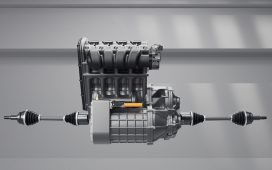WINTER is a dangerous time for drivers and the cold weather can cause a lot of problems in vehicles.
Most people aren’t aware of some of the tell-tale signs of underlying issues and this puts both you and your car at risk of serious accidents.
However, with help of the RAC, drivers can now look out for the 10 signs that prove their car isn’t ready for the winter – and when to take action.
Remember your ‘FORCES’
If you can remember this acronym then you’ll go a long way to ensuring your car is ready for any drive in wintry conditions:
F is for FUEL – Ensure you have enough fuel for your journey.
O is for OIL – Remember to check your oil level and top up when necessary to avoid engine damage and a potential breakdown.
R is for RUBBER – Check that all four tyres have at least 3mm of tread and are inflated to the correct pressure – this is vital to maintaining good grip in wet and icy conditions.
C is for COOLANT – Make sure it’s topped up to your vehicle manufacturer’s recommended levels and contains the right amount of anti-freeze.
E is for ELECTRICS – Check all of your lights are working correctly – including your indicators, brake lights and fog lights – and replace any faulty bulbs or blown fuses.
S is for SCREENWASH – Top-up your windscreen washer fluid by using a good quality screenwash which is effective down to cold temperatures – colder conditions demand a more concentrated solution.
Brakes
Brakes feel different in winter and it’s important to keep an eye on wear rates, with grip usually at its lowest at this time of year.
Unusual grumbling noises, a car pulling to one side or a “long” spongy brake pedal could point towards a problem with the braking system.
Flaring engine revs
Flaring engine revs under hard acceleration are the main indicator that your vehicle’s clutch is slipping.
Do not leave it as doing so may damage your flywheel and in turn, your engine.
Intermittent knocking sound
An intermittent knocking or droning sound – especially when going round corners – could indicate a worn wheel bearing or driveshaft coupling.
If left unchecked this could eventually cause expensive damage to the hub assembly and suspension and lead to a loss of drive.
Accumulating condensation on windows
Constant freezing, thawing and condensation can see water accumulate where rain doesn’t during the winter.
If your car’s seals are past their best and water gets into the electrics, it could manifest itself in a number of ways: engine misfires, faulty electric windows or dud door locks can all be signs of a leak.
Engine hesitation
Hesitation from the engine when trying to accelerate could be down to a problem with the fuel system.
If you’ve let your car run very low on fuel, it could have disturbed some sediment in the tank and sucked it past the fuel filter, causing a small blockage.
Engine stutter
This could be a sign of your spark plugs or spark plug leads having deteriorated to the point that they aren’t working properly.
Either way, both can cause damage to the engine, so it’s worth getting them checked as soon as possible.
Frozen car door
If your vehicle won’t open using the remote central locking fob in winter, try a spare fob or use the emergency key – it’s usually inside the remote fob.
Make sure you replace the battery regularly, especially if you start noticing the fob working intermittently.
Loud knocking
If your car develops a strong rattle, stop the engine immediately and check the oil level on flat ground.
If it’s below the minimum on the dipstick – or not even registering on the dipstick at all – top it up with a suitable grade of engine oil.
Engine won’t start
If your vehicle’s engine won’t start, you could have a flat battery or a stuck starter motor.
Look to charge your car battery or receive a jump-start from a healthy car.
If it happens again, your battery could be reaching the end of its life or it’s possible your alternator might not be charging the battery properly, too.














